Publications
** You can find the full list of my publications on my Google Scholar profile and browse some preprints on arXiv. **
Highlights
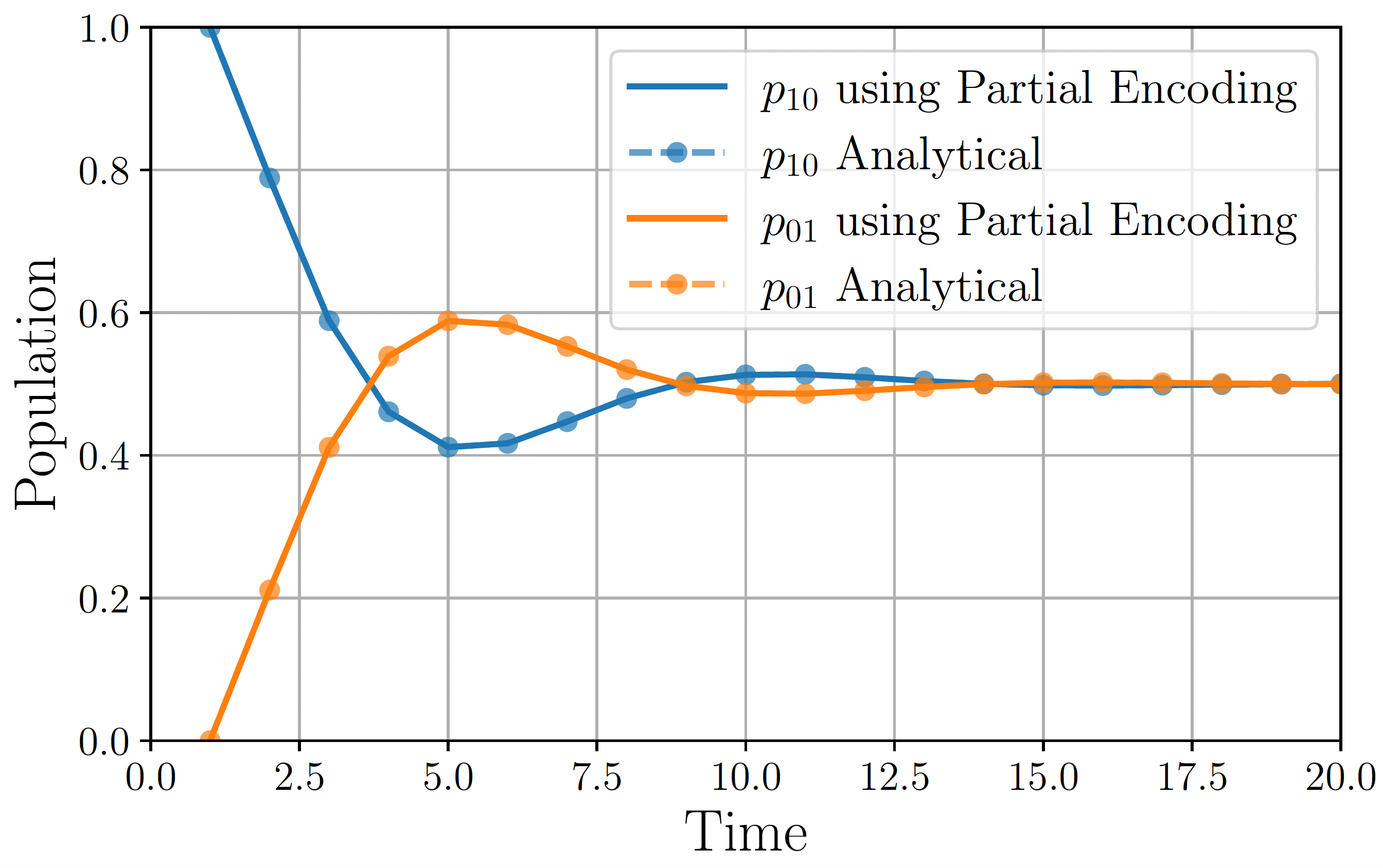
We develop a noise-assisted quantum algorithm that selectively preserves physical noise to emulate nonunitary channels, enabling efficient simulation of open quantum dynamics with minimal qubit requirements. Our approach applies both to noisy intermediate-scale quantum (NISQ) devices and future fault-tolerant architectures.
Sameer Dambal, Akira Sone*, Yu Zhang*
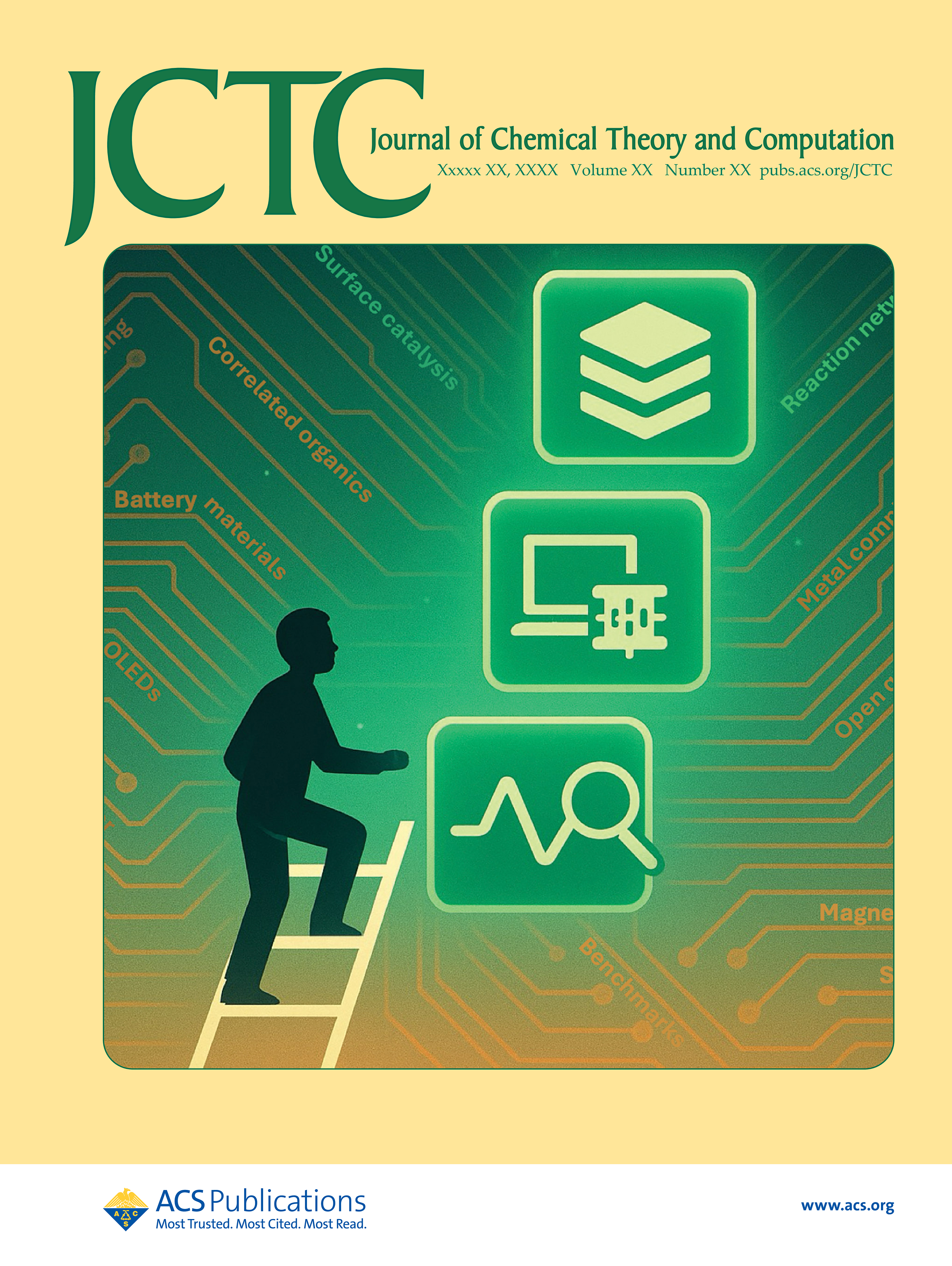
This perspective focuses on identifying scientifically meaningful use cases where early fault-tolerant quantum computers, which are considered to be equipped with approximately 25–100 logical qubits, could deliver tangible impact. While recent advances in classical computing have pushed the boundaries of tractable simulations to unprecedented scales, this logical-qubit regime represents the first window where quantum devices can pursue qualitatively distinct strategies. We highlight near-term opportunities in algorithm and software design, discuss representative chemical problems suited for quantum acceleration, and propose strategic roadmaps and collaborative pathways for advancing practical quantum utility in quantum chemistry.
Yuri Alexeev, Victor S Batista, Nicholas Bauman, Luke Bertels, Daniel Claudino, Rishab Dutta, Laura Gagliardi, Scott Godwin, Niranjan Govind, Martin Head-Gordon, Matthew Hermes, Karol Kowalski, Ang Li, Chenxu Liu, Junyu Liu, Ping Liu, Juan M Garcia-Lustra, Daniel Mejia-Rodriguez, Karl Mueller, Matthew Otten, Bo Peng, Mark Raugus, Markus Reiher, Paul Rigor, Wendy Shaw, Mark van Schilfgaarde, Tejs Vegge, Yu Zhang, Muqing Zheng, Linghua Zhu
arXiv:2506.19337; J. Chem. Theory Comput. in press (2025)
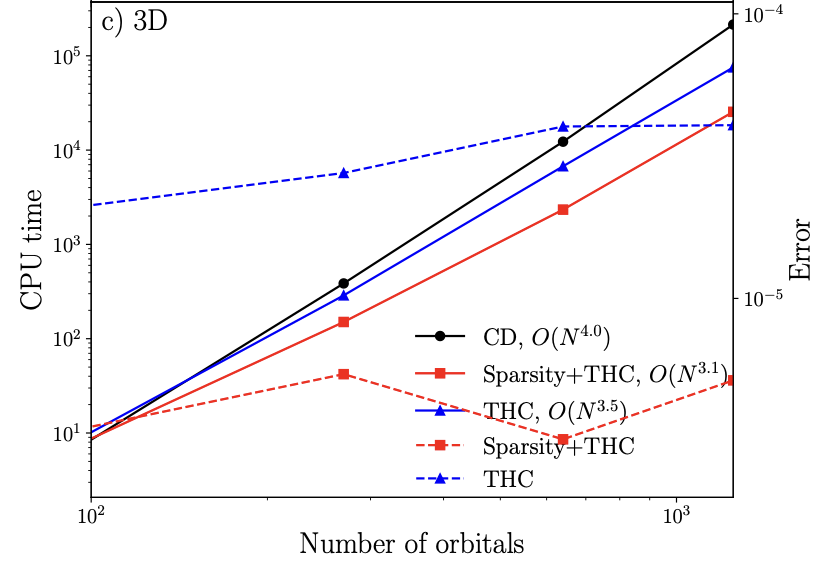
We present a reduced-scaling auxiliary-field quantum Monte Carlo (AFQMC) framework designed for large molecular systems and ensembles, with or without coupling to optical cavities. Our approach leverages the natural block sparsity of Cholesky decomposition (CD) of electron repulsion integrals in molecular ensembles and employs tensor hypercontraction (THC) to efficiently compress low-rank Cholesky blocks. By representing the Cholesky vectors in a mixed format, keeping high-rank blocks in block-sparse form and compressing low-rank blocks with THC, we reduce the scaling of exchange-energy evaluation from quartic to robust cubic in the number of molecular orbitals, while lowering memory from cubic toward quadratic.
Yu Zhang*
arXiv preprint arXiv:2510.11634
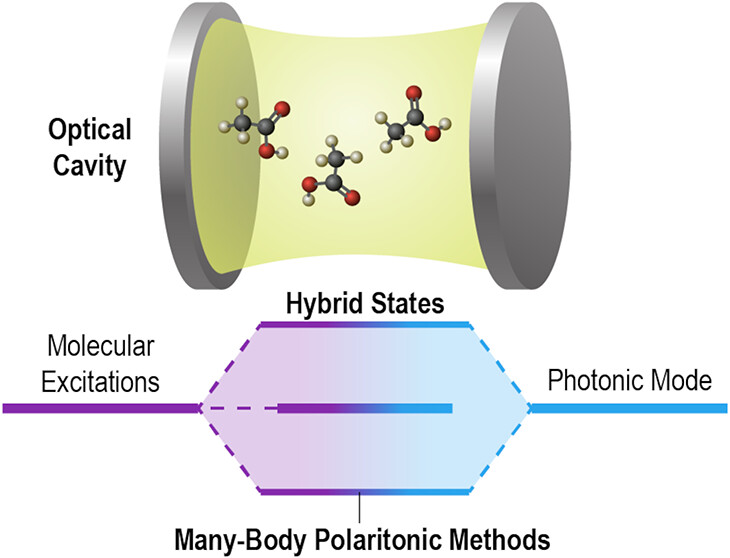
In this Perspective, we review the growing landscape of many-body QED methods, including Hartree–Fock, density functional theory (QEDFT), time-dependent DFT (QED-TDDFT), configuration interaction (QED-CI), complete active space (QED-CASSCF), coupled cluster (QED-CC), quantum Monte Carlo (QED-QMC), and density matrix renormalization group (QED-DMRG), highlighting recent developments and implementations. We further explore real-time methods, gradient and Hessian formalisms, and the integration of nonadiabatic nuclear dynamics.
Nicholas Bauman, Leonardo A Cunha, A Eugene DePrince III, Johannes Flick, Jonathan J Foley IV, Niranjan Govind, Gerrit Groenhof, Norah Hoffmann, Karol Kowalski, Xiaosong Li, Marcus Liebenthal, Neepa T Maitra, Ruby Manderna, Mikuláš Matoušek, Ilia M Mazin, Daniel Mejia-Rodriguez, Ajay Panyala, Bo Peng, Benjamin Peyton, Libor Veis, Nam Vu, Jared D Weidman, Angela K Wilson, Rhiannon A Zarotiadis, Yu Zhang
J. Chem. Theory Comput. 21, 10035 (2025).
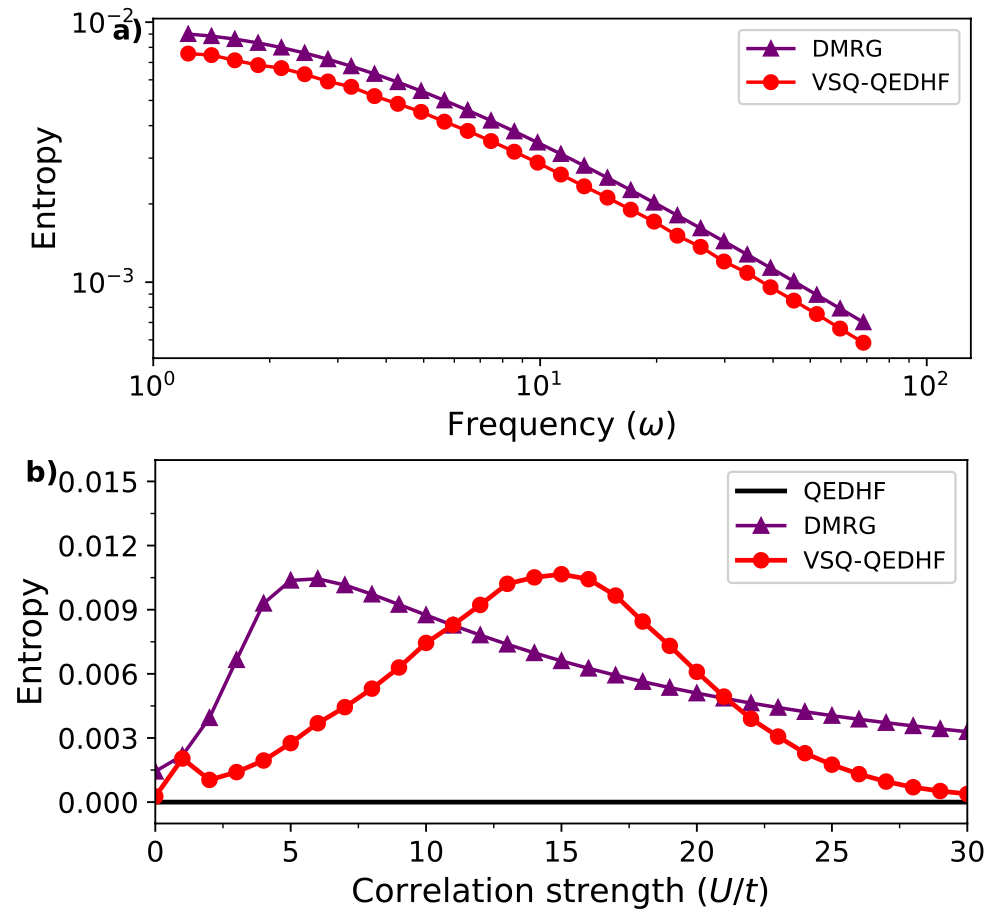
This work extends the quantum electrodynamics Hartree-Fock (QEDHF) framework by introducing a variational squeezed (VSQ) transformation to capture anharmonic fluctuations in strongly coupled systems. Unlike the conventional product-state QEDHF approach, this enhanced formalism incorporates light-matter entanglement by optimizing squeezing parameters, improving the accuracy of photon field quantum fluctuation descriptions. The proposed method provides deeper insights into light-matter hybridization and enables first-principles studies of entanglement, advancing the predictive capabilities of QEDHF in strong coupling regimes.
I. Mazin and Y. Zhang*
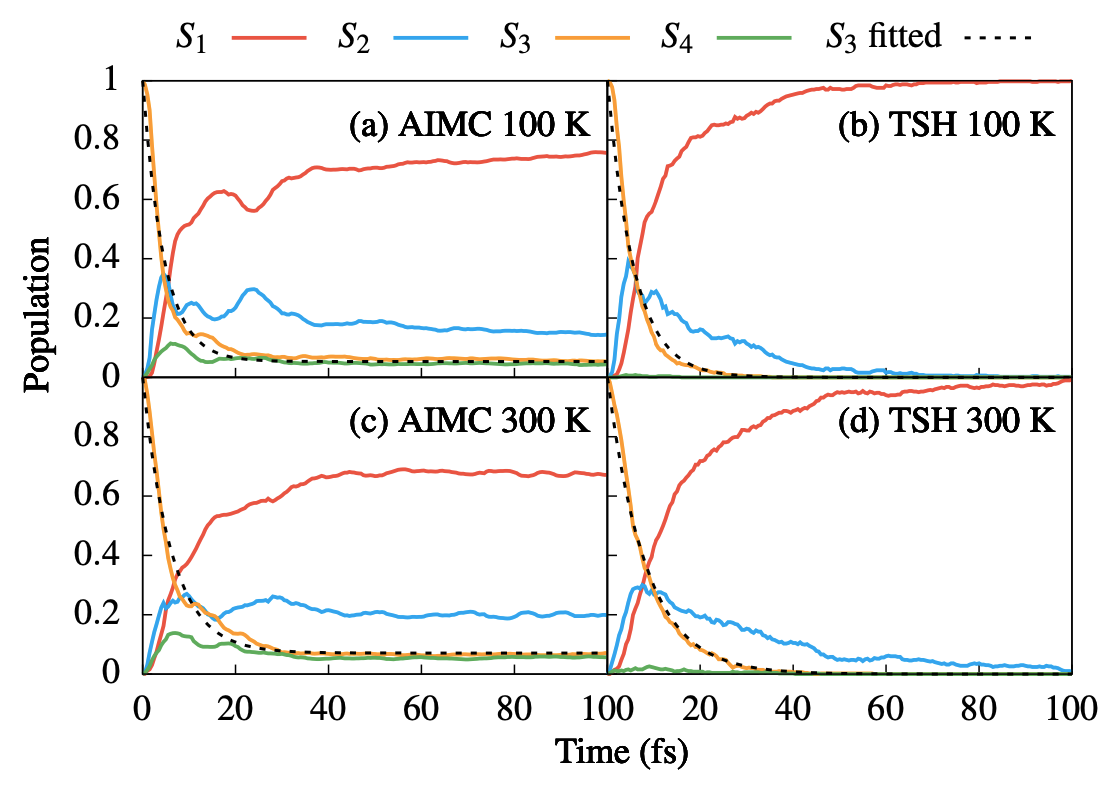
This work introduces a coherent-state-based many-body approach to model light-matter interactions in polaritonic systems, implementing a nonadiabatic molecular dynamics framework within the NEXMD package. Using pyridine as a model system, simulations reveal that coherence and decoherence are crucial for accurately capturing exciton-polariton dynamics. Compared to surface hopping, the semiclassical Ab Initio Multiple Cloning (AIMC) protocol demonstrates prolonged relaxation times, emphasizing the need to properly treat coherence for reliable simulations of polariton-mediated dynamics.
X. Li, S. Tretiak and Y. Zhang*
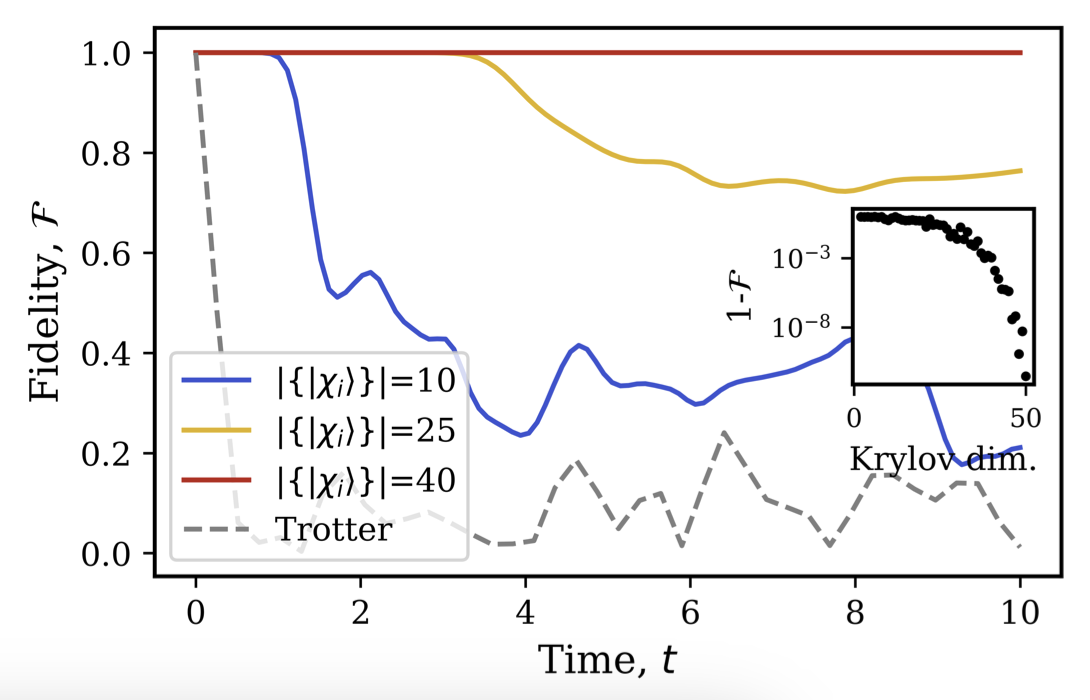
In this study, we intro- duce and evaluate two QKS methods derived from the QDavidson algorithm, a novel approach for determining the ground and excited states of many-body systems. Unlike other QKS methods that pre-generate the Krylov subspace through real- or imaginary-time evolution, QDavidson iteratively adds basis vectors into the Krylov subspace. This iterative process enables faster convergence with fewer iterations and necessitates shallower circuit depths, marking a significant advancement in the field of quantum simulation.
N. Berthusen, F. Alam, Yu Zhang*
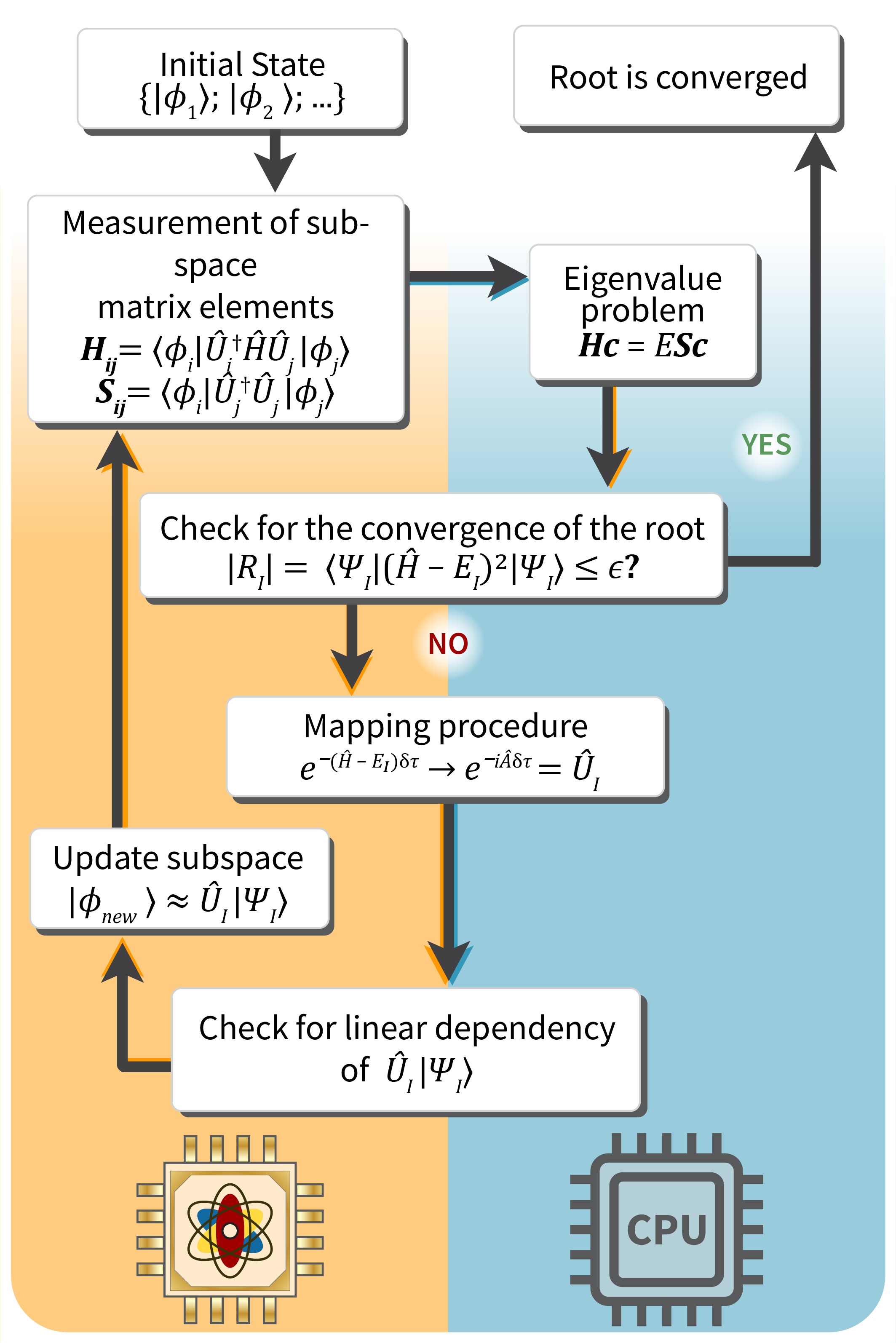
Excited state properties play a pivotal role in various chemical and physical phenomena, such as charge separation and light emission. However, the primary focus of most existing quantum algorithms has been the ground state. In this work, we present an economic quantum Davidson algorithm (QDavidson) that utilizes iterative expansion of the Krylov subspace and a pre-conditioner within the Davidson framework. By using the residues of eigenstates to expand the Krylov subspace, we manage to formulate a compact subspace that aligns closely with the exact solutions.
N. Tkachenko, L. Cincio, A. I. Boldyrev, S. Tretiak, P. Dub and Y. Zhang*
Quantum Sci. Technol. 9, 035012, (2024).

In this work, we explore the formally exact diffusion quantum Monte Carlo approach to obtain numerical solutions to the polaritonic ground state during the dissociation of the $H_2$ molecular system. We examine various electron-nuclear-photon properties throughout the dissociation, such as changes to the minimum of the cavity Born-Oppenheimer surface, the localization of the electronic wave function, and the average mode occupation. Finally, we directly compare our results to that obtained with state-of-the-art, yet approximate, polaritonic coupled cluster approaches.
B. M. Weight, S. Tretiak, and Y. Zhang*
Phys. Rev. A 109, 032804 (2024)
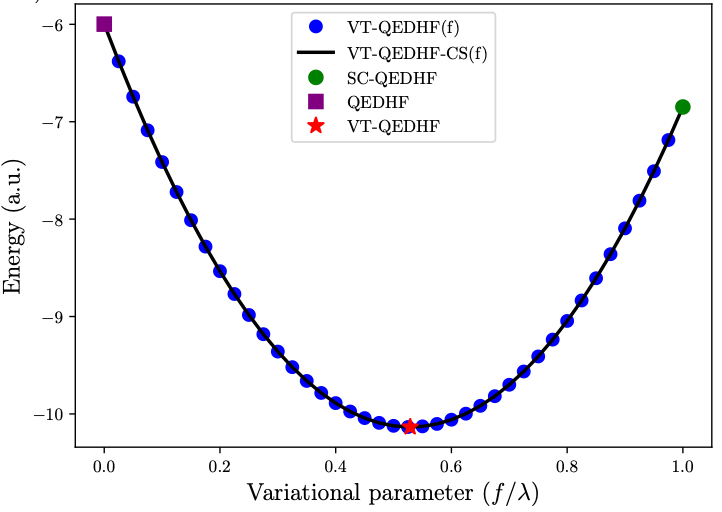
In this work, we developed a variational transformation-based molecular quantum electrodynamics mean-field method, namely VT-QEDHF, for light-matter interaction at arbitrary coupling strength. The numerical benchmark demonstrates that the VT-QEDHF method naturally connects both QEDHF and self-consistent QEDHF methods at the two limits, showcasing the advantage of VT-QEHDF across all coupling strengths.
X. Li, and Y. Zhang*
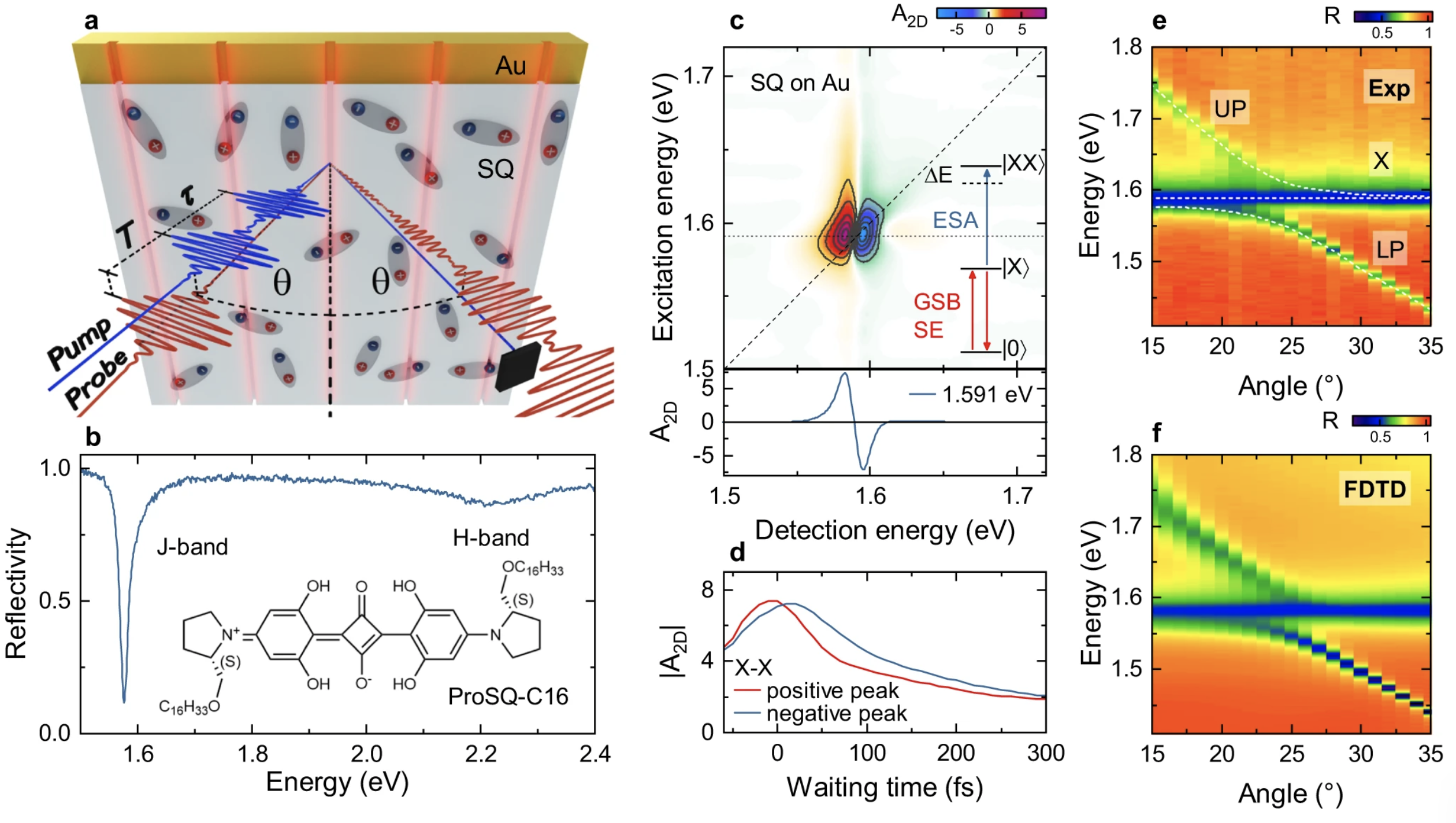
By utilizing ultrafast two-dimensional electronic spectroscopy to probe the quantum dynamics of J-aggregate excitons collectively coupled to the spatially structured plasmonic fields of a gold nanoslit array, we observe rich coherent Rabi oscillation dynamics reflecting a plasmon-driven coherent exciton population transfer over mesoscopic distances at room temperature. This opens up new opportunities to manipulate the coherent transport of matter excitations by coupling to vacuum fields.
D. Timmer, M. Gittinger, T. Quenzel, S. Stephan, Y. Zhang, M. F. Schumacher, A. Lützen, M. Silies, S. Tretiak, J. Zhong, A. De Sio and C. Lienau*
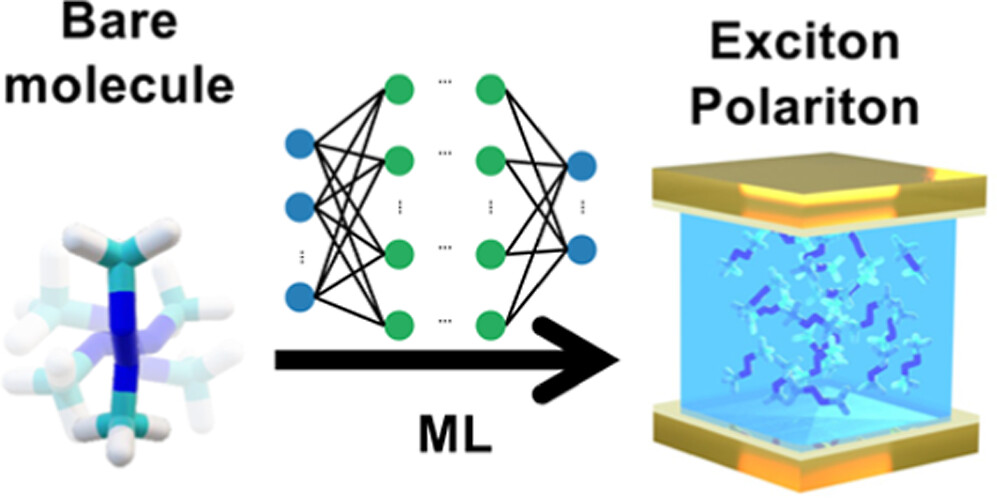
Polariton chemistry is a collective phenomenon, and its effects increase with the number of molecules in a cavity. However, simulating an ensemble of molecules in the excited state coupled to a cavity mode is theoretically and computationally challenging. This work presents a general protocol to predict excited-state properties, such as energies, transition dipoles, and nonadiabatic coupling vectors with the hierarchically interacting particle neural network. ML predictions are then applied to compute the potential energy surfaces and electronic spectra of a prototype azomethane molecule in the collective coupling scenario. These computational tools provide a much-needed framework to model and understand many molecules’ emerging excited-state polariton chemistry.
Xinyang Li, Nicholas Lubbers, Sergei Tretiak, Kipton Barros*, and Yu Zhang*
J. Chem. Theory Comput. 20, 891 (2024).
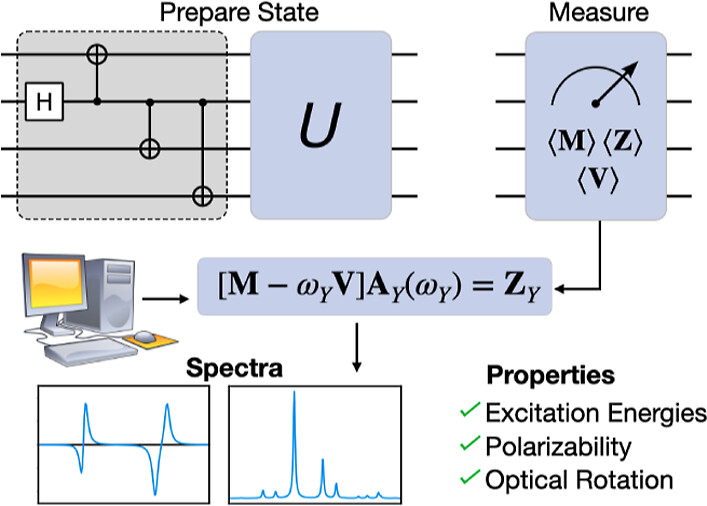
In this work, we develop a quantum linear response (qLR) theory to calculate molecular response properties on near-term quantum computers. Inspired by the recently developed variants of the quantum counterpart of equation of motion (qEOM) theory, the qLR formalism employs “killer condition” satisfying excitation operator manifolds that offer a number of theoretical advantages along with reduced quantum resource requirements. We also used the qEOM framework in this work to calculate the state-specific response properties.
A. Kumar*, A. Asthana, V. Abraham, T. D. Crawford, N. J. Mayhall, Y. Zhang*, L. Cincio, S. Tretiak, and P. A. Dub*
J. Chem. Theory Comput. 19, 9316 (2023).
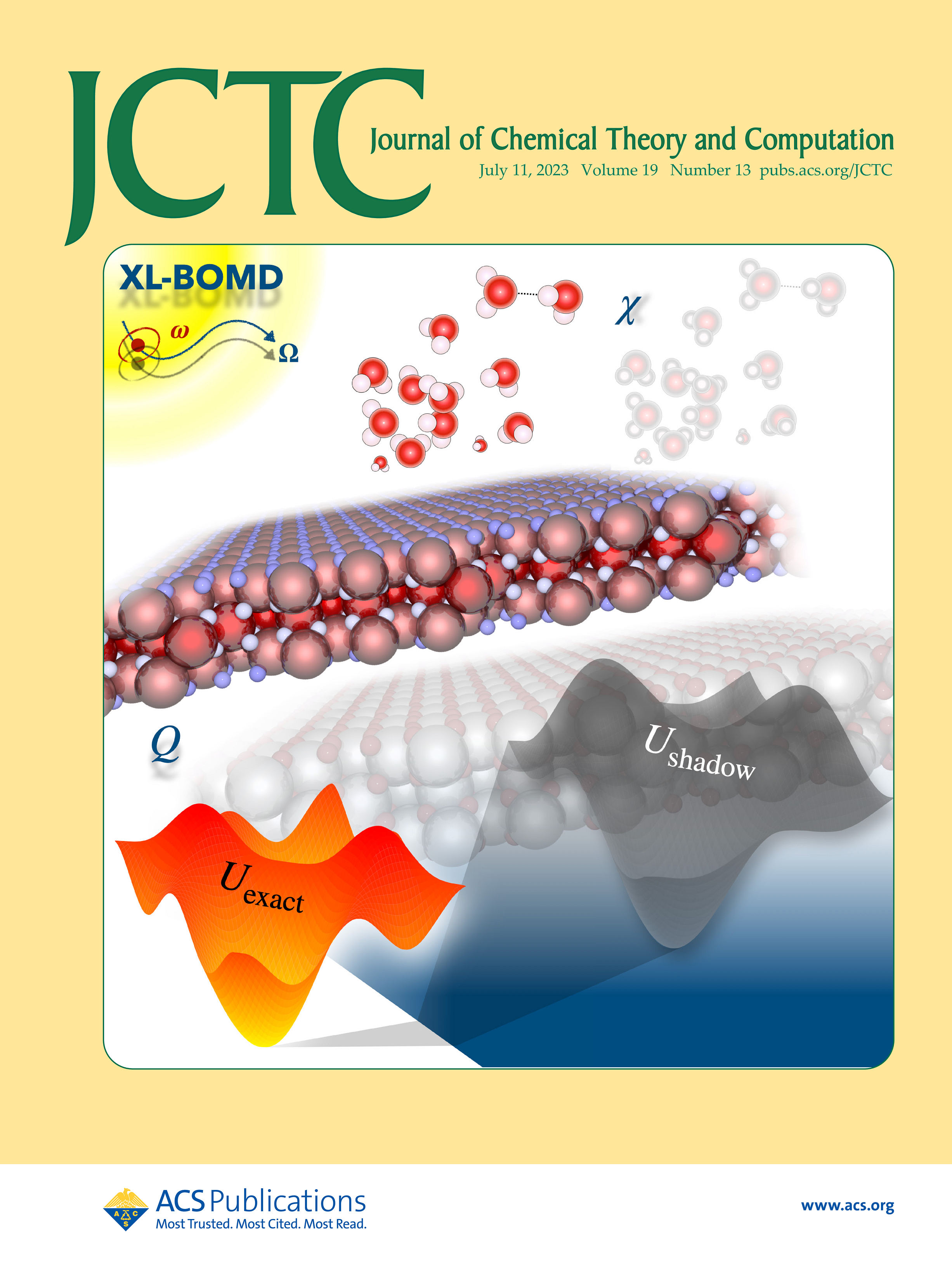
This work presents a shadow molecular dynamics scheme for flexible charge models where the shadow Born–Oppenheimer potential is derived from a coarse-grained approximation of range-separated density functional theory.
J. Goff*, Y. Zhang, C. Negre, A. Rohskopf, and A. M. N. Niklasson*
J. Chem. Theory Comput. 19, 4255 (2023).
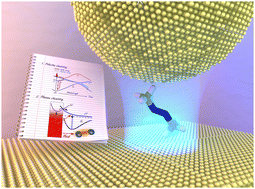
This perspective starts with the basic background of light-matter interactions, molecular quantum electrodynamics theory, and the challenges of modeling light-matter interactions in chemistry. Then, the recent advances in modeling plasmon and polariton chemistry are described, and future directions toward multiscale simulations of light–matter interaction-mediated chemistry are discussed.
B. M. Weight, X. Li, Y. Zhang*
Phys. Chem. Chem. Phys., 25, 31554 (2023).
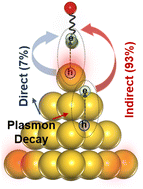
Our simulations provide important dynamical and atomistic insights into plasmon-mediated chemical transformations from the perspective of non-adiabatic simulations.
X. Wu, T van der Heide, S. Wen, T. Frauenheim, S. Tretiak, C. Yam, Y. Zhang*
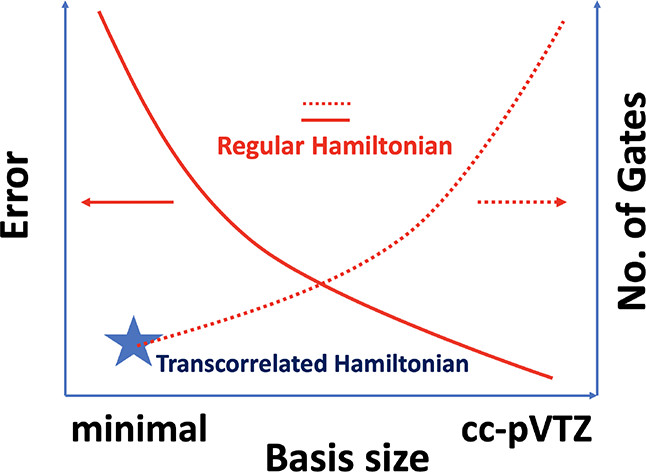
Simulation of electronic structure is one of the most promising applications on noisy intermediate-scale quantum (NISQ) era devices. However, NISQ devices suffer from a number of challenges like limited qubit connectivity, short coherence times, and sizable gate error rates. Thus, desired quantum algorithms should require shallow circuit depths and low qubit counts to take advantage of these devices. Here, we attempt to reduce quantum resource requirements for molecular simulations on a quantum computer while maintaining the desired accuracy with the help of classical quantum chemical theories of canonical transformation and explicit correlation
A. Kumar, A. Asthana, C. Masteran, E. F. Valeev*, Y. Zhang*, L. Cincio, S. Tretiak, and P. A. Dub*
J. Chem. Theory Comput. 18, 5312 (2022).
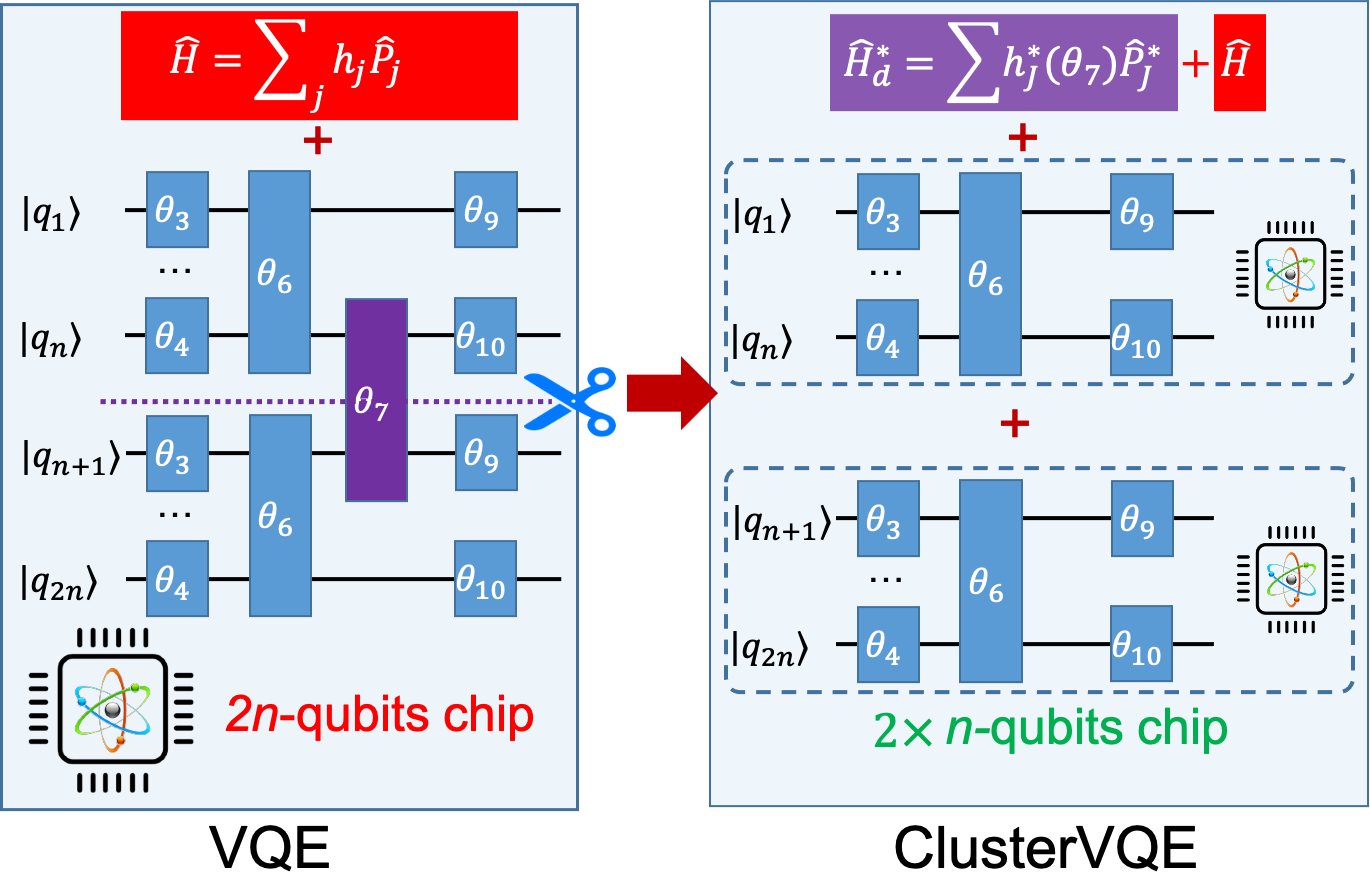
This work presents a quantum parallel algorithm (ClusterVQE) that allows exact simulation of the problem by using fewer qubits and shallower circuit depth at the cost of additional classical resources, making it a potential leader for quantum chemistry simulations on NISQ.
Y. Zhang*, L. Cincio, C. FA Negre, P. Czarnik, P. J Coles, P. M Anisimov, S. M Mniszewski, S. Tretiak, P. A Dub
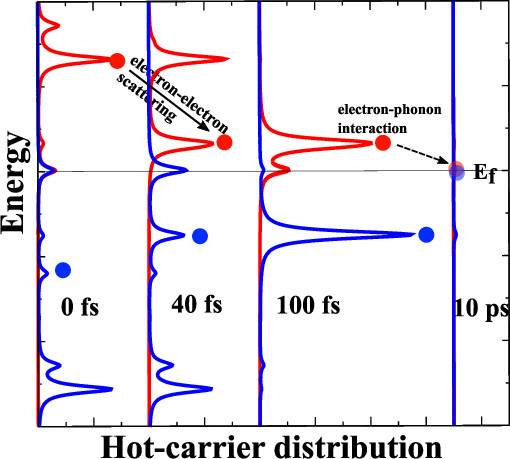
Hot-carrier (HC) generation from (localized) surface plasmon decay has recently attracted much attention due to its promising applications in physical, chemical, materials, and energy science. However, the detailed mechanisms of plasmonic HC generation, relaxation, and trapping are less studied. In this work, we developed and applied a quantum-mechanical model and coupled master equation method to study the generation of HCs from plasmon decay and their following relaxation processes with different mechanisms treated on equal footing.
Y. Zhang*
J. Phys. Chem. A 125, 9201 (2021).
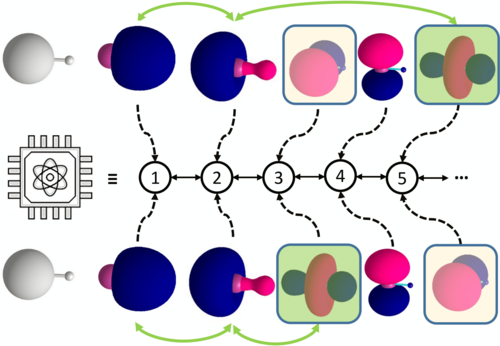
A Variational Quantum Eigensolver, namely PermVQE, that permutes qubits in order to solve for the qubit Hamiltonian that maximally localizes correlations in the ground state.
N. V. Tkachenko, J. Sud, Y. Zhang*, S. Tretiak, P. M. Anisimov, A. T. Arrasmith, P. J. Coles, L. Cincio*, and P. A. Dub*
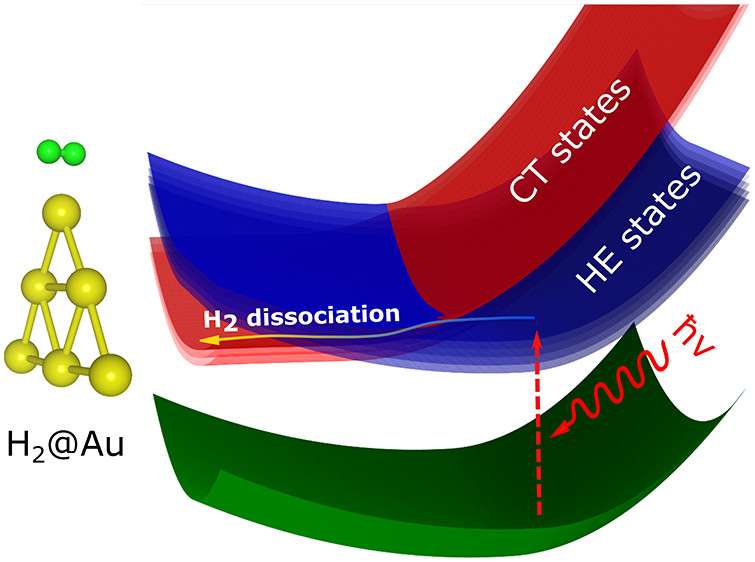
A comprehensive physical picture of photoinduced H2 dissociation on Au clusters.
Q. Wu, L. Zhou, G. C. Schatz, Y. Zhang*, and H. Guo*.
J. Am. Chem. Soc. 142, 13090 (2020).
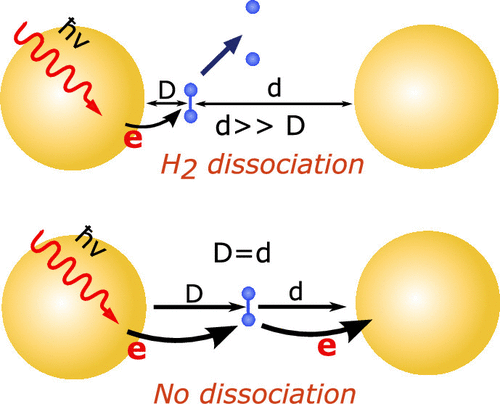
An atomic-scale mechanism of a plasmonic hot-carrier-mediated chemical process, H2 dissociation.
Y. Zhang*, T. Nelson, S. Tretiak, and G. C. Schatz.